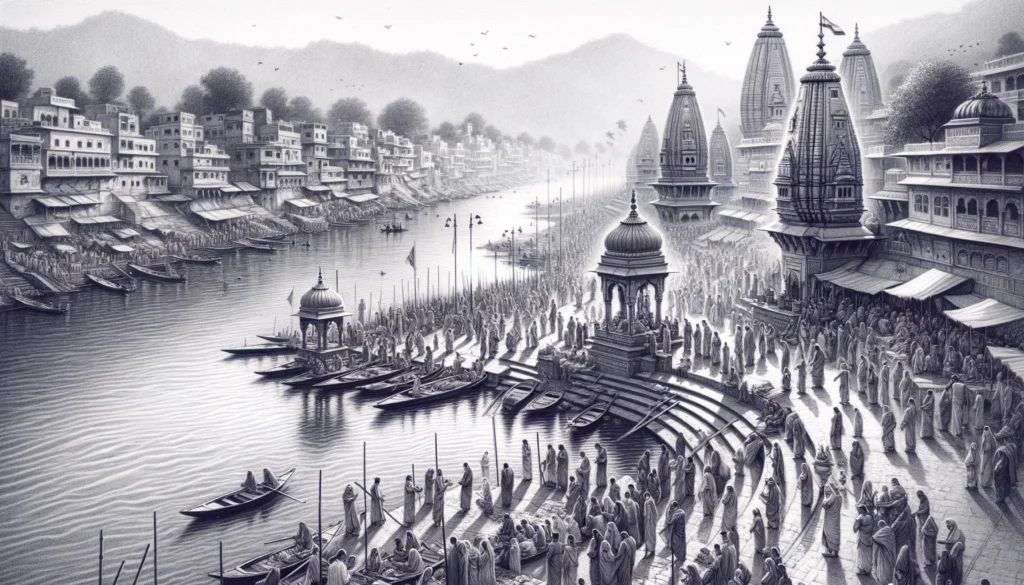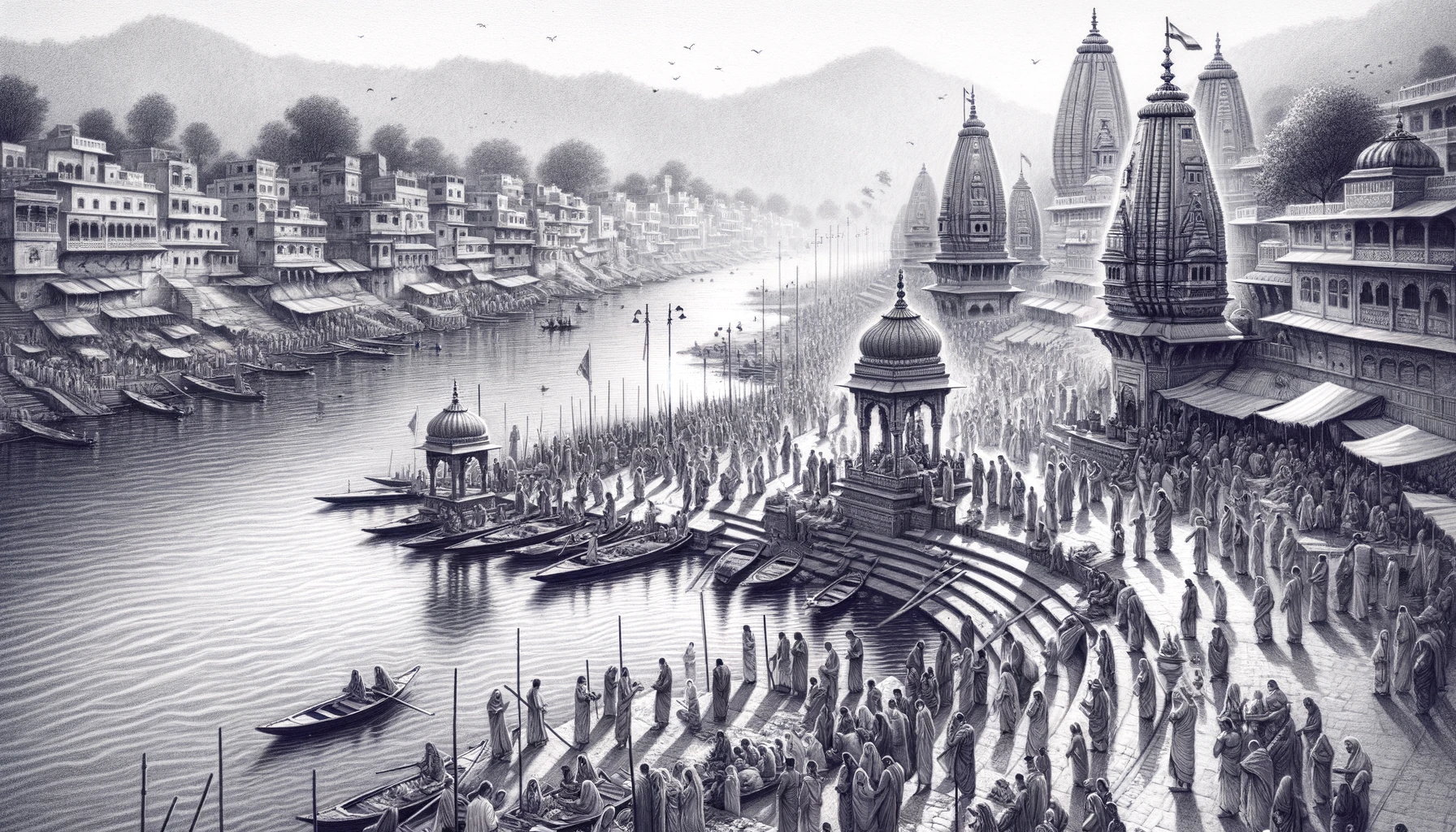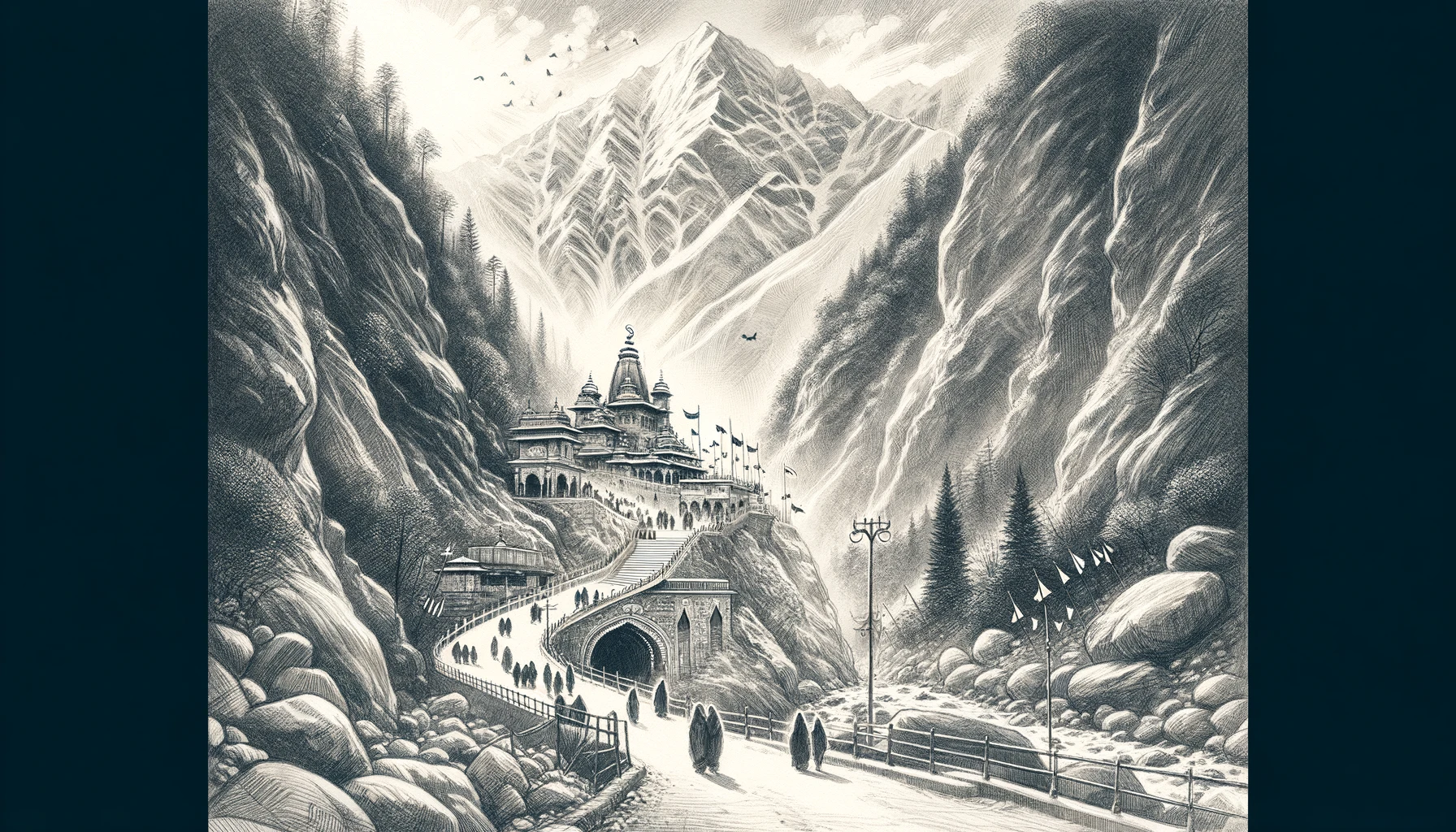
Introduction
Haridwar, regarded as one of the seven holiest places in Hinduism, serves as a gateway to the divine. Located where the River Ganges emerges from the Himalayas, Haridwar is more than just a city; it’s a pivotal spiritual journey destination, where history and mythology paint a vivid tapestry of devotion and culture.
Mythological Roots
The city’s name, Haridwar, translates to ‘Gateway to God’, and its mythological roots are as deep as the river that flows through it. According to ancient texts, Haridwar is one of the four sites where drops of Amrit, the elixir of immortality, spilled from the celestial Kumbh carried by the celestial bird Garuda. This mythological event is commemorated by the Kumbh Mela, the largest peaceful gathering in the world, which draws millions of pilgrims from across the globe.
A Stroll Through History
Haridwar’s historical significance is immense, having been a center of Hindu religion and mysticism for centuries. It has seen the rise and fall of many empires and has been a witness to the spiritual quest of countless souls. The city has also been mentioned in several ancient scriptures and texts, highlighting its role as a major pilgrimage site through the ages.
Monuments of Faith and Valor
- Har Ki Pauri: The most famous ghat in Haridwar, known for its evening Ganga Aarti, where thousands gather to offer their prayers and witness the river come alive with floating lamps.
- Mansa Devi Temple: Situated atop the Bilwa Parvat, this temple dedicated to Goddess Mansa Devi offers panoramic views of Haridwar and is a testament to the city’s enduring spirituality.
- Chandi Devi Temple: Another significant temple located on the Neel Parvat, it’s accessible by cable car and is a site of great mythological and historical significance.
Heroes of Haridwar
While Haridwar is primarily known for its religious significance, it has also been home to figures who have contributed significantly to the cultural and social fabric of India. Saints and sages like Rishi Bharadwaj and Swami Vivekananda spent time here, their teachings and works contributing immensely to the spiritual and philosophical heritage of India.
Between Myth and Reality
In Haridwar, the lines between history and mythology blur, as each temple, ghat, and ashram tells a story of divine encounters and historical events. The city is a living museum, where ancient traditions are preserved, and the spiritual essence of India is palpable in its every corner.
Exploring Haridwar
Visitors to Haridwar are invited to dive into its spiritual ambiance, partake in the Ganga Aarti, meditate on the ghats, and explore the ancient temples that dot its landscape. Beyond the spiritual journey, Haridwar offers a chance to explore India’s rich biodiversity at the Rajaji National Park, showcasing the country’s natural splendor.
Conclusion
Haridwar stands at the crossroads of the divine and the earthly, offering a unique blend of spiritual solace, historical intrigue, and natural beauty. It invites seekers and travelers alike to immerse themselves in its sacred waters, explore its mythological and historical sites, and experience the timeless journey of faith and devotion that has drawn pilgrims for millennia.

